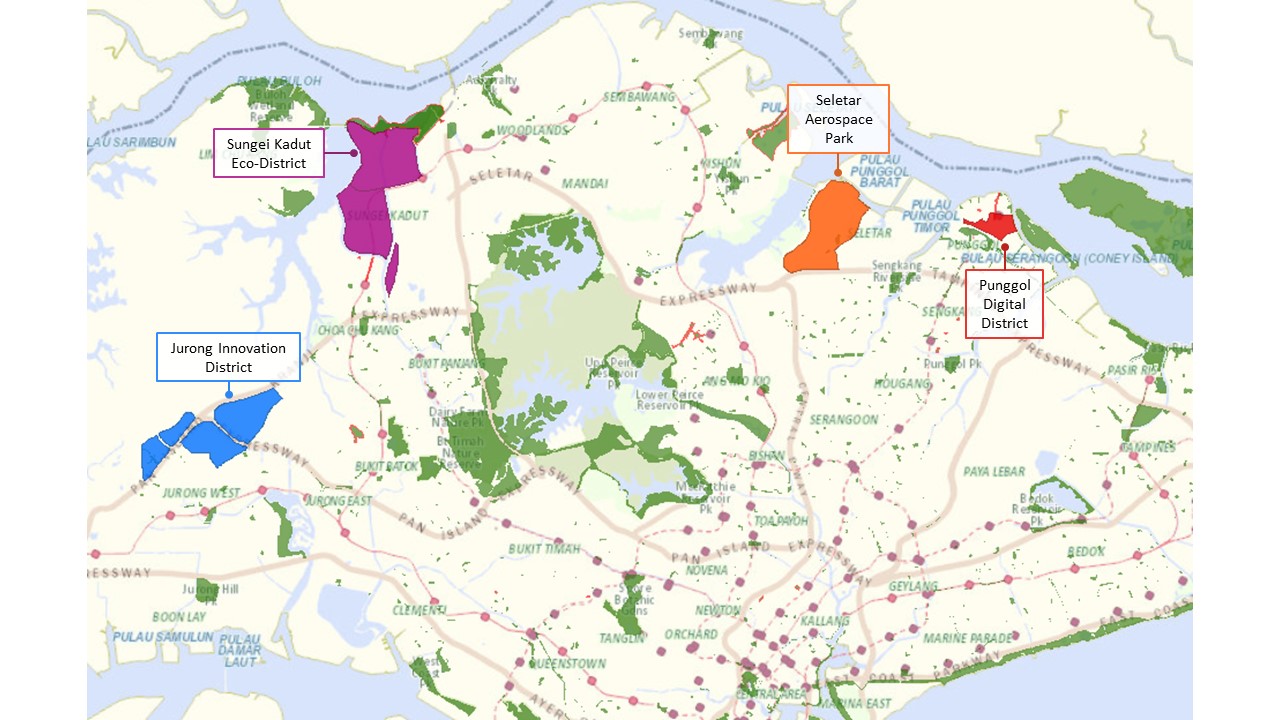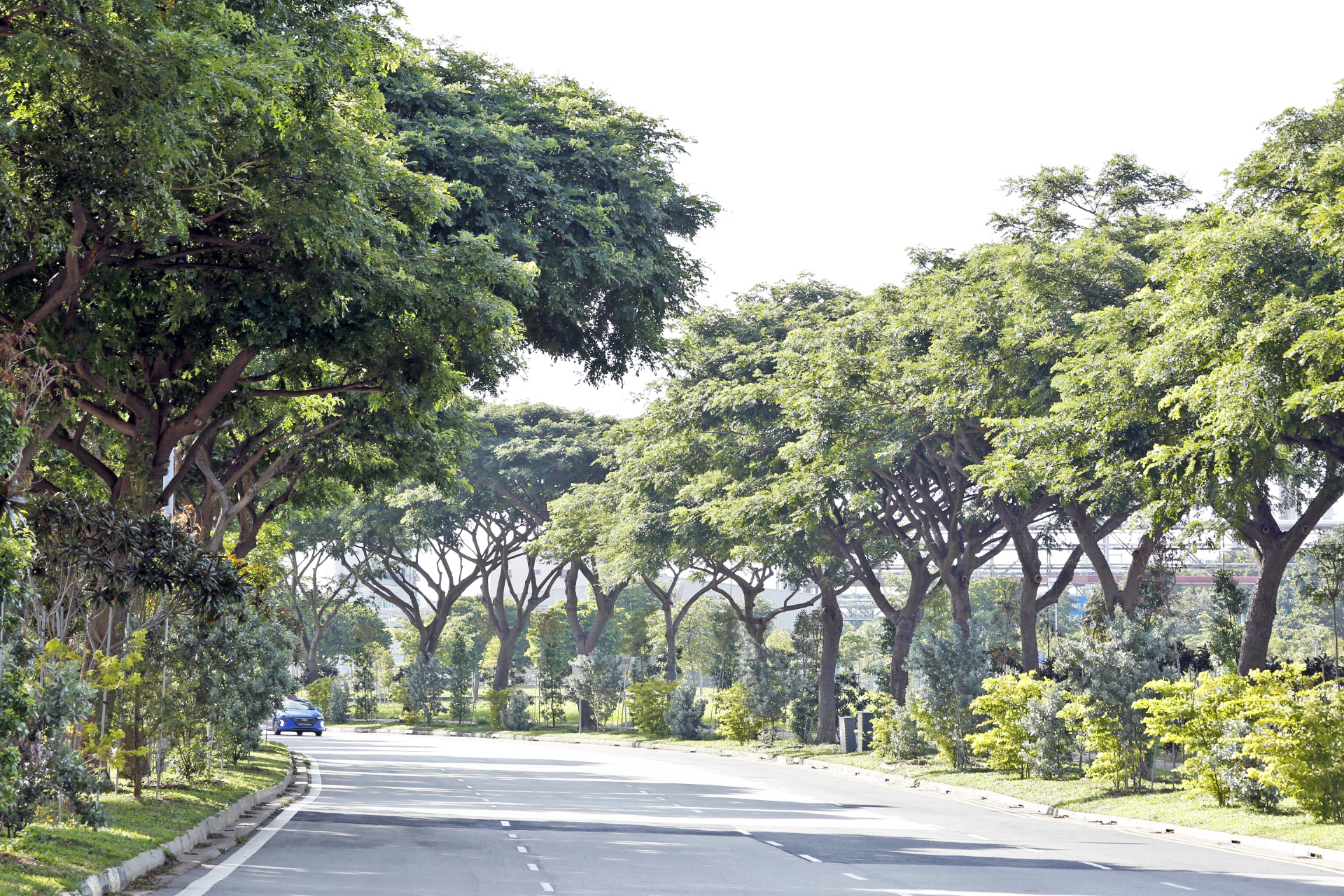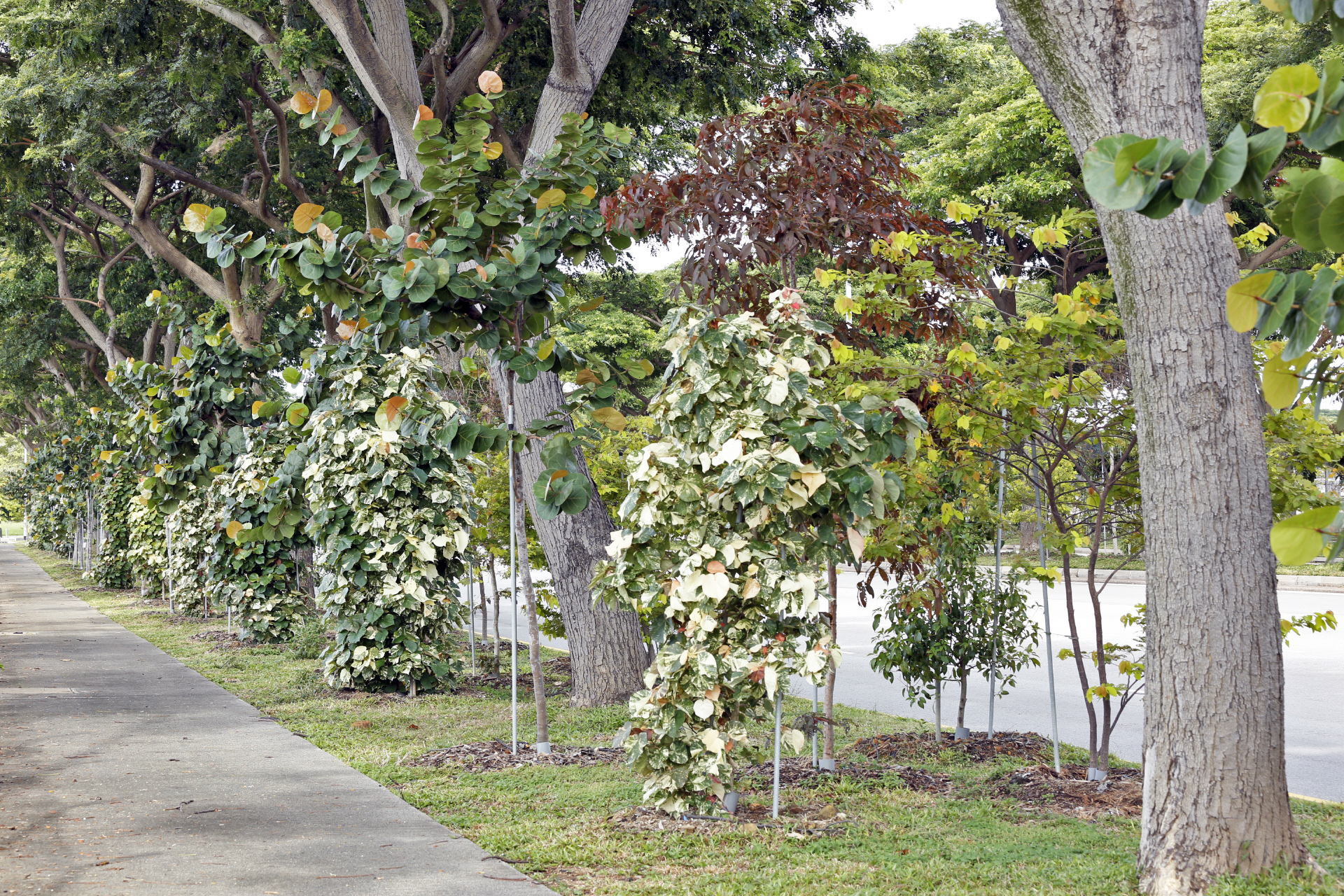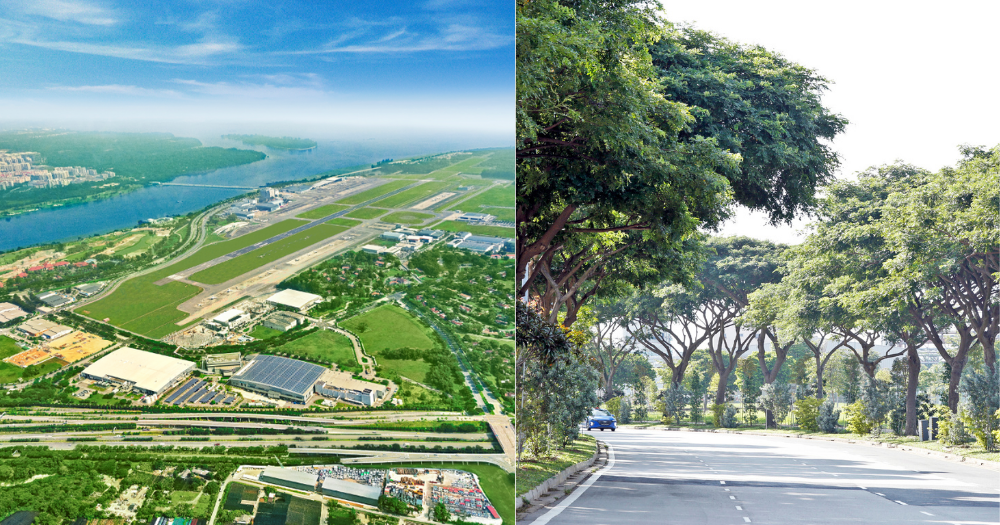As Singapore aims to plant a million trees by 2030, residents can look forward to lush greenery along roads, and even our industrial estates.
In an announcement by Minister for National Development Desmond Lee on Monday (Oct. 26), he announced that industrial estates will see close to a threefold increase in trees by 2030, from around 90,000 trees to about 260,000 trees in 2030.
At the same time, there will about 100 hectares of new green spaces in industrial spaces, including Jurong Island, Jurong Innovation District, Punggol Digital District and Sungei Kadut Eco-District (as seen on the map below).

Greenery could reduce temperatures by 6°C in urban areas
Over the next 10 years, around 170,000 trees will be planted within industrial estates, with the help of the community, which includes JTC Corporation's (JTC) corporate partners, residents, schools, NParks volunteers, nature and community groups.
The tree planting will be carried out to mimic the structure of plants in a forest, with a tiered planting system with multiple species, as compared to a single row of homogenous trees.
According to modelling studies done by NParks, this multi-tiered planting structure could reduce surface temperatures by up to 6 degree Celsius along our roads and state lands.
This would combat the urban heat island effect caused by increased urbanisation and a reduction of greenery.
This effect can be explained by warmer temperatures in an urban area, like an industrial estate with roads and vehicles, as compared to cooler temperature in rural or greener spaces, such as Pulau Ubin.
To measure and understand the effects of greenery on the urban microclimate, NParks will also be deploying a network of environmental sensors within the Jurong area, including Jurong Industrial Estate and Jurong Island.
A total of 40 sets of sensors will be strategically placed across different parts of the Jurong area to collect data on ambient temperature, relative humidity and wind speed to support research projects and help improve the effectiveness of NParks' strategies in improving thermal comfort with greenery.
A tender for these environmental sensors will be called by the end of this year.
About 170,000 trees to be planted in industrial estates by 2030
In an effort to cool industrial areas and improve air quality in these spaces, NParks will be working with JTC, to add about 100 hectares of new green spaces in industrial areas by 2030.
The green spaces will include parks in industrial areas and roadside greenery, in the hopes of creating a more attractive and conducive work environment by bringing the therapeutic effects of greenery closer to people’s workplaces.
One example of a recently added new green space is the 3.2-hectare Hampstead Wetlands Park at Seletar Aerospace Park, opened by JTC and NParks in April this year.
The Wetlands Park is complemented by least 10 hectares of roadside greenery and has proven to be popular with visitors, including residents from other parts of Singapore.
At the same time, new green spaces in industrial estates will link to surrounding natural green spaces.
For example, Sungei Kadut Eco-District will link Sungei Buloh Nature Park Network and the Rail Corridor.
34,000 new trees to be planted on Jurong Island by 2022
In collaboration with JTC, NParks will be working with the Jurong Island community to plant 34,000 new trees by 2022 to intensify greenery and nature on the island, while enabling greater community stewardship of the environment.
So far, nearly 13,000 new trees have been planted on Jurong Island, based on their hardiness and drought tolerance, and ability to add shade, colour and vibrancy to the island between March 2019 to October 2020.
For example, the Jurong Island Highway was enhanced with nearly 5,000 trees such as Neolitsea cassia, Lagerstroemia floribunda ‘Red’, Dendrolobium umbellatum, Conocarpus erectus, Cerbera cultivar (red leaves) and Barringtonia racemosa to become an attractive gateway into Jurong Island to welcome workers and visitors.
Here is what Jurong Island Highway looks like after the intensive tree planting:
 Photo by NParks
Photo by NParks
 Photo by NParks
Photo by NParks
By 2022, Jurong Island could have a total tree population of 44,000, which is a vast improvement from the tree population of 10,000 before the initiative to green Jurong Island.
On Monday (Oct. 26), NParks and JTC held a community tree planting event on Jurong Island, under the One Million Trees movement.
A total of 100 trees were planted by Minister for National Development Desmond Lee, together with individuals passionate about the environment such as Han Jok Kwang and his wife Leong Wai Leng, residents from West Coast Group Representation Constituency, as well as 32 companies from the Jurong Island community.
Lee highlighted Han and Leong as their donation to the Garden City Fund, a NParks’ registered charity and Institution of a Public Character, would help plant 168 trees towards the greening of Jurong Island initiative, in celebration of their 35th wedding anniversary.
To date, over 70 companies and organisations from the Jurong Island community have supported the greening of the island by donating to the greening of Jurong Island initiative through the Garden City Fund.
ExxonMobil, the largest contributor so far by a single organisation, contributed $120,000 towards the initiative, which would fund 400 trees.
We deliver more stories to you on LinkedIn
Top images by NParks
If you like what you read, follow us on Facebook, Instagram, Twitter and Telegram to get the latest updates.
